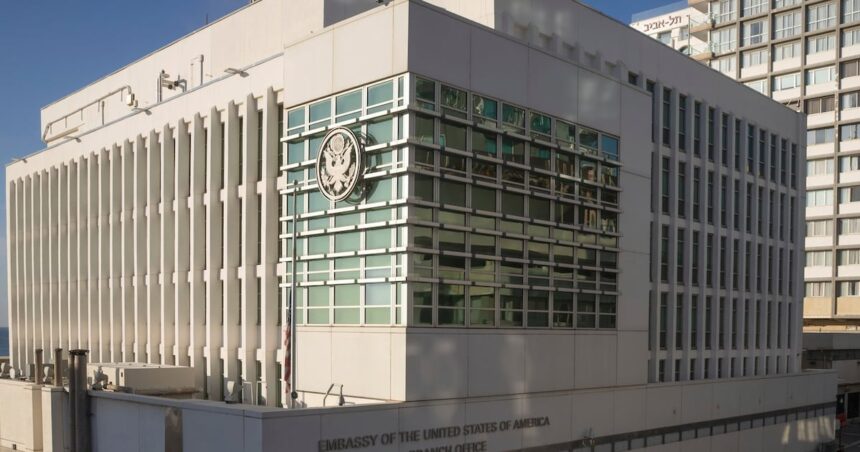The chaos at Kuwait International Airport hit me like a wall of heat the moment I stepped off the evacuation flight from Tehran. Hundreds of American citizens crowded the terminal, some clutching hastily packed luggage, others just the clothes on their backs. “We had fifteen minutes to decide what to pack,” explained Sarah Moretti, a Boston University researcher who’d been studying cultural preservation efforts in Isfahan. “My colleague is still there. We don’t know if she made it out.”
This scene is repeating across the Middle East as the State Department orchestrates what officials call “the most extensive civilian evacuation operation since Afghanistan.” Following President Trump’s authorization of strikes against Iran’s nuclear facilities yesterday, the Pentagon has mobilized military assets to support emergency evacuations for an estimated 75,000 American citizens across the region.
“We’re prioritizing immediate departures from Iran, Lebanon, and western Syria,” explained Deputy Assistant Secretary of State Marcus Willard during an emergency briefing I attended in Kuwait City. “Secondary evacuations from Jordan, Iraq, and the UAE will follow as military capabilities permit.”
The strikes, which targeted three nuclear facilities and two military command centers near Tehran, came after months of rising tensions following Iran’s announcement in April that it had achieved 90% uranium enrichment. Intelligence sources within the Pentagon confirmed to me that at least 37 Iranian military personnel were killed in the strikes, though Tehran claims civilian casualties exceed 200.
“This is the culmination of a diplomatic failure that’s been brewing for years,” Dr. Vali Nasr, former dean of Johns Hopkins School of Advanced International Studies, told me via encrypted call. “The 2015 nuclear deal’s collapse set us on this path, and subsequent administrations never found the diplomatic off-ramp.”
On the ground in Kuwait, military logistics teams are working around the clock. C-17 transport aircraft arrive hourly at the joint U.S.-Kuwaiti air base west of the city, with Navy vessels positioned in the Persian Gulf to assist evacuation operations if airspace becomes restricted. According to CENTCOM figures, over 5,800 Americans have been evacuated in the past 36 hours.
The humanitarian dimension is growing increasingly dire. At Kuwait’s Crowne Plaza Hotel, converted into a processing center for evacuees, I met Elizabeth Chen, a humanitarian worker with Mercy Corps who escaped Lebanon hours before Hezbollah launched retaliatory strikes against northern Israel.
“The streets in Beirut were absolute gridlock,” Chen recalled, her eyes revealing the exhaustion of someone who hasn’t slept in days. “Lebanese citizens are panicking too—they remember 2006 all too well, and this could be worse.”
The financial impacts are already reverberating globally. Oil prices surged 17% overnight, reaching $143 per barrel—the highest since 2022. European stock markets plunged nearly 6% at opening, while Asian markets closed down nearly 9%. The International Energy Agency has called an emergency meeting to discuss releasing strategic petroleum reserves.
“We’re looking at potential supply disruptions from not just Iran, but potentially the entire Gulf if this escalates further,” explained Fatih Birol, IEA Executive Director, in a statement released this morning. The organization estimates up to 30% of global oil supply could be affected if conflict spreads.
For Americans trapped deeper inside Iran, the situation is increasingly perilous. The State Department’s Emergency Task Force has established direct evacuation pathways through Armenia and Azerbaijan, though border crossings remain congested and dangerous.
“We have credible intelligence that Iranian Revolutionary Guard units are preventing some American citizens from reaching border crossings,” a senior U.S. intelligence official confirmed to me on condition of anonymity. “We’re exploring multiple extraction options, including possible third-country diplomatic assistance.”
The European Union has activated its Civil Protection Mechanism to coordinate evacuation efforts for EU citizens, with France and Germany leading operations centered from their embassies in Tehran, which remain operational despite reduced staffing.
At the United Nations, an emergency Security Council meeting ended without resolution after Russia and China blocked a U.S.-sponsored statement condemning Iran’s nuclear program advancement. Ambassador Linda Thomas-Greenfield described the situation as “a moment of maximum danger for global security.”
For ordinary Iranians, the strikes represent yet another chapter in decades of hardship. Speaking via secure messaging from Tehran, Reza, a 34-year-old software engineer who asked I use only his first name, described a city transformed overnight.
“The power has been out in my neighborhood for eighteen hours. Military vehicles are everywhere. People are lining up for basic supplies,” he wrote. “Most Iranians don’t want nuclear weapons or war with America. We’re hostages to policies we cannot control.”
Back in Kuwait, as night falls and another evacuation flight prepares to depart, the human toll of geopolitical brinkmanship becomes painfully clear. A young mother cradles her sleeping infant while explaining they left her husband behind in Tehran, unable to secure his exit due to his dual citizenship status.
“We had to choose between staying together in danger or splitting up so at least some of us could be safe,” she tells me, declining to give her name out of fear for her husband’s safety. “What kind of choice is that for anyone to make?”
As military operations intensify and diplomatic channels narrow, the next 72 hours will likely determine whether this crisis escalates into regional war or retreats from the brink. For thousands of evacuees and millions of civilians across the Middle East, that uncertain future hangs in the balance.






